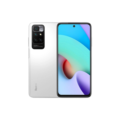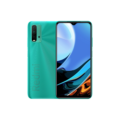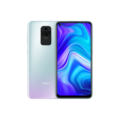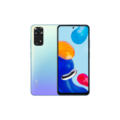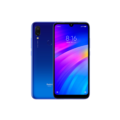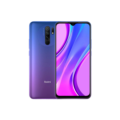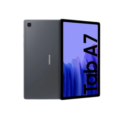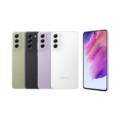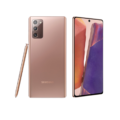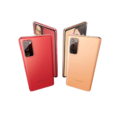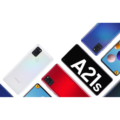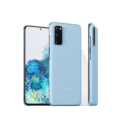Redmi K40 Harga Malaysia
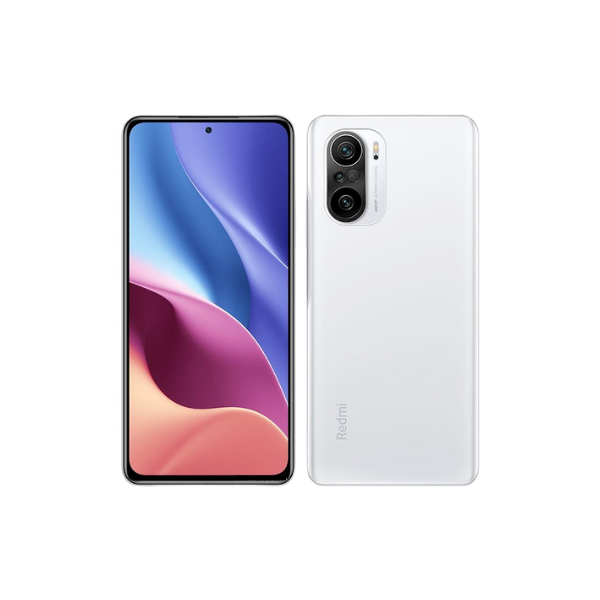

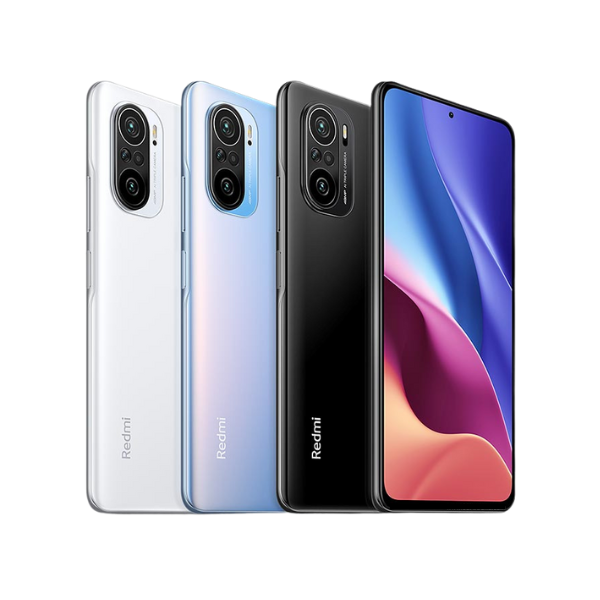
- CPU: Qualcomm SM8250-AC Snapdragon 870 5G (7 nm)
- RAM: 6 GB, 8 GB, 12 GB
- Storage: 128 GB, 256 GB
- Display: Super AMOLED
- Camera: 48 MP Triple Camera
- OS: Android 11, MIUI 12
- AnTuTu Total Score: 722.864 (v9)
Redmi K40 Harga Malaysia Spesifikasi Malaysia
General
| Device Type | Smart Phone |
| Model | M2012K11AC |
| Announced | 25 February, 2021 |
| Released | 04 March, 2021 |
| Status | Available |
| Price | RM1,282 - RM - 1,529 |
Design
| Type <strong>Design Type</strong> called form factor refers to a mobile phone's size, shape, and style as well as the layout and position of major components of phone. There are three major form factors seen in mobile phones => bar phones, folding phones and sliding phones. | Bar |
| Dimensions | 163.7 x 76.4 x 7.8 mm (6.44 x 3.01 x 0.31 in) |
| Weight | 196 g (6.91 oz) |
| Colors | Black, White, Aurora |
Network
| 4G Network | 1, 2, 3, 4, 5, 7, 8, 18, 19, 26, 28, 34, 38, 39, 40, 41, 42 |
| 5G Network | 1, 3, 28, 41, 77, 78 SA/NSA/Sub6 |
| SIM <strong>SIM</strong> (Subscriber Identity Module) is a small card that contains mobile network subscriber's account information. This allows the phone using the card to attach to a mobile network. The SIM card is most commonly associated with GSM and UMTS mobile networks. Moving a SIM card from one phone to another allows a subscriber to switch mobile phones without having to contact their mobile network carrier. SIM cards can also be used by a phone to store limited amounts of data, such as phone numbers and text messages. | Nano SIM |
| Dual SIM | dual stand-by |
Display
| Display Type <strong>Display Technology => </strong> A number of display technologies and types used in mobile phones => TFT (Thin Film Transistor), IPS (In-Place Switching), OLED (Organic Light Emitting Diode), AMOLED (Active-Matrix Organic Light-Emitting Diode), Super AMOLED (an even advanced version of AMOLED), Resistive Touchscreen (Resistive touchscreens contain two layer of conductive material with a very small gap between them which acts as a resistance), Capacitive Touchsceen (Capacitive touchscreen technology consists of a layer of glass coated with a transparent conductor) | Super AMOLED |
| Size | 6.67 inches, 107.4 cm2 (~85.9% screen-to-body ratio) |
| Resolution | 1080 x 2400 pixels, 20:9 ratio |
| Display Colors <strong>Display Colors</strong> is refers to the number of different shades of colors that the screen is capable of displaying => 64K colors, 256K colors and 16 million colors, Obviously 16M is highest available range of colors and better than others. | 16 Millions Colors |
| Pixel Density <strong>Pixel Density (PPI)</strong> is refers to the concentration of pixels on a particular display, measured in pixels per inch (ppi). Pixel density is calculated by dividing the diagonal pixel resolution of a display by its diagonal size, higher pixel density better display quality. | (~395 ppi density) |
| Touch Screen | Yes, Multitouch |
| Display Protection <strong>Display Protection => </strong> Gorilla Glass is a special alkali-aluminosilicate glass shield with exceptional damage resistance that helps protect mobile displays from scratches, drops, and bumps of everyday use, It is always better to go for a smartphone with Gorilla Glass for that added protection and peace of mind. | Corning Gorilla Glass 5 |
| Features |
120Hz refresh rate HDR10+ 1300 nits (peak) |
Camera
| Rear Camera <strong>Camera</strong> is able to capture photographs and usually videos, The most important characteristics of a camera are the resolution (measured in megapixels), lens focus type (fixed or automatic), higher megapixel cameras are known to capture higher quality photos, but not always a good measurement of the photos quality. |
Triple Camera 48 MP, f/1.8, 26mm (wide), 1/2&amp;quot;, 0.8µm, PDAF 8 MP, f/2.2, 119˚ (ultrawide) 5 MP, f/2.4, 50mm (macro), 1/5.0&amp;quot;, 1.12µm |
| Front Camera | 20 MP, f/2.5, (wide), 1/3.4&amp;quot;, 0.8µm, 1080p@30fps, 720p@120fps |
| Image | 2160p |
| Video | 4K@30fps, 1080p@30/60/120/240/960fps, gyro-EIS |
| Camera Features | LED flash, HDR, panorama |
Software
| Operating System <strong>OS => </strong> Every computer system run on a base software called Operating System (OS). Operating System controls all basic operations of the computer (such as smartphone, PDAs, tablet computers and other handheld devices). The Operating System allows the user to install and run third party applications (apps), apps are used to add new functionality to the device. | Android 11 |
| User Interface <strong>UI</strong> or user interface of a device is the look and feel of the on-screen menu system. How it works, its color scheme, how it responds to button presses, all of these things are part of the user interface. | MIUI 12 |
Hardware
| Chipset <strong>Chipset</strong> is a group of integrated circuits designed to perform one or a more dedicated functions, often with real time computing constraints, Popular smartphones are equipped with more advanced embedded chipsets that can do many different tasks depending on their programming. | Qualcomm SM8250-AC Snapdragon 870 5G (7 nm) |
| CPU <strong>CPU</strong> (Central Processing Unit) mostly known as processors, CPU processes instructions in order to carry out certain functions that make your device operate properly. Processors are often described as the brain of computers, smartphones and tablets, Smartphones and tablets rely on processors to carry out their every task, Processors are an incredibly important factor in selecting any type of computing device, including your smartphone. | Octa-core (1x3.2 GHz Kryo 585 & 3x2.42 GHz Kryo 585 & 4x1.80 GHz Kryo 585) |
| GPU <strong>GPU</strong> (Graphics Processing Unit) is a single-chip processor designed to rapidly manipulate and alter memory to accelerate the creation of images in a frame buffer intended for output to a display, This includes things such as lighting effects, object transformations, and 3D motion. | Adreno 650 |
| RAM (Memory) <strong>RAM</strong> (Random Access Memory) is a type of computer memory that can be accessed randomly, any byte of memory can be accessed without touching the preceding bytes that allows information to be stored and accessed quickly from random locations. RAM is the most common type of memory found in computer systems, smartphones, tablets and other electronic devices. | 6 GB, 8 GB, 12 GB |
| Internal Storage <strong>Internal Storage</strong> is a data storage space (flash memory) mostly used in smartphones, tablets and other electronic devices where operating system, apps, music, photos, videos, files and other user data Is stored. | 128 GB, 256 GB |
| Card Slot <strong>Memory Card Slot</strong> is a special slot for inserting a memory card. Memory cards allow you to expand the phone's built-in memory, A memory card (sometimes called a flash memory card or a storage card) is a small storage medium used to store data such as text, pictures, audio, and video, for use on small, portable or remote computing devices such as mobile phones, mp3 players, digital cameras. | No |
| Sensors <strong>Sensors</strong> are electronic components that detects and responds to some type of input from the physical environment. The specific input could be light, heat, motion, moisture, pressure and location, The output is generally a signal that is converted to use in computing systems, a location sensor, such as a GPS receiver is able to detect current location of your electronic device. | Fingerprint (side-mounted), accelerometer, gyro, proximity, compass, color spectrum |
Battery
| Battery Type <strong>Battery Type => </strong> Cell phones run on various kinds of batteries depending on the manufacturer, phone size or shape and features. There are basically four types of cell phone batteries => Lithium Polymer, Lithium Ion, Nickel Metal Hydride and Nickel Cadmium. | Li-Poly (Lithium Polymer) |
| Placement | non-removable |
| Capacity <strong>Battery Capacity</strong> is a measure (typically in Amp-hr) of the charge stored by the battery, and is determined by the mass of active material contained in the battery. The battery capacity represents the maximum amount of energy that can be extracted from the battery under certain conditions. | 4520 mAh |
| Charging | 33W wired, PD3.0, QC3, 100% in 52 min (advertised) |
Connectivity
| Bluetooth <strong>Bluetooth</strong> is a wireless communications technology for exchanging data between mobile phones, headsets, computers and other network devices over short distances without wires, Bluetooth technology was primarily designed to support simple wireless networking of personal consumer devices. | 5.1, A2DP, LE |
| Wi-fi <strong>Wi-Fi</strong> is a popular wireless networking technology using radio waves to provide high-speed network connections that allows devices to communicate without cords or cables, Wi-Fi is increasingly becoming the preferred mode of internet connectivity all over the world. | Wi-Fi 802.11 a/b/g/n/ac/6, dual-band, Wi-Fi Direct |
| Wi-fi Hotspot | |
| USB | USB Type-C 2.0, USB On-The-Go |
| GPS <strong>GPS</strong> The Global Positioning System is a satellite-based radio navigation system, GPS permits users to determine their position, velocity and the time 24 hours a day, in all weather, anywhere in the world, In order to locate your position, your device or GPS receiver must have a clear view of the sky. | GPS (L1+L5), GLONASS (G1), BDS (B1I+B2a), GALILEO (E1+E5a), QZSS (L1+L5), NavIC |
| NFC <strong>NFC</strong> (Near field communication) is a set of standards for smartphones and similar devices to establish peer-to-peer radio communications with each other by touching them together or bringing them into proximity, usually no more than a few inches. | |
| Wireless Charging <strong>Wireless Charging</strong> (Inductive Charging) uses an electromagnetic field to transfer energy between two objects. This is usually done with a charging station. Energy is sent through an inductive coupling to an electrical device, which can then use that energy to charge batteries or run the device. | No |
Media
| Loudspeaker | Yes, with stereo speakers |
| Handsfree | No |
Sebelum ini, peranti siri Redmi daripada Xiaomi dikenali sebagai telefon pintar berpatutan dengan spesifikasi yang agak berkualiti dalam kelas menengah rendah. Tetapi kali ini, Xiaomi telah melancarkan telefon pintar flagship dengan menggunakan label Redmi, iaitu siri Redmi K40.
Pada Februari 2024, Xiaomi secara rasmi melancarkan siri Redmi K40, serta versi Redmi K40 Standard, versi Pro, dan versi Pro+ (versi tertinggi). Aspek spesifikasi tinggi dan harga yang kompetitif masih menjadi daya tarikan utama.
Banyak bahagian adalah serupa, terutamanya dalam reka bentuk dan skrin, perbezaannya terletak pada cipset dan kamera utama yang digunakan.
Kemudian pada April 2024, Redmi K40 Gaming Edition turut melengkapkan barisan Redmi K40.
Telefon pintar ini adalah telefon gaming pertama dari barisan Redmi. Didedikasikan kepada para pemain permainan video, telefon ini dilengkapi dengan ciri-ciri terkini dan teknologi yang canggih.
Tidak lama kemudian, Redmi sekali lagi melancarkan rangkaian gaming Redmi dalam produk istimewa yang dipanggil Edisi Khas Redmi K40 Bruce Lee.
Untuk menyiasat lebih lanjut mengenai spesifikasi Redmi K40, sila lihat ulasan di bawah.
Reka Bentuk
Siri Redmi K40 mempunyai persamaan dari segi reka bentuk. Siri K40 kelihatan serupa dan membawa reka bentuk seperti Xiaomi Mi 11, terutamanya lengkungan badan dan susunan kamera belakang. Semuanya ada dalam warna Hitam, Putih, dan Aurora.
Siri K40 mempunyai reka bentuk yang lebih elegan daripada K30 dengan berat 196g dan ketebalan 7.8mm. Pengimbas cap jari terbenam dengan butang daya menjadikannya lebih mudah ditekan apabila jari anda mengimbas.
Paparan
Siri K40 mempunyai skrin paparan seluas 6.67 inci dengan resolusi FHD+ (1080 x 2400 piksel) dalam nisbah aspek 20:9. Ia juga menyokong ruang warna DCI-P3, HDR10+, dan mendapat penarafan A+ daripada DisplayMate.
Kecerahan skrin boleh diatur dengan lancar, dengan jumlah keseluruhan 8,192 tahap dan kecerahan maksimum 1,300 nit. Skrin dilindungi oleh Gorilla Glass 5 seperti versi rasmi sebelumnya.
Kamera
Dari segi kamera, siri K40 mempunyai perbezaan antara ketiga-tiganya.
Redmi K40
Redmi K40 mempunyai tiga unit kamera belakang dengan kamera utama 48MP f/1.8 menggunakan sensor imej Sony IMX582 1/2 inci. Didampingi dengan kamera ultrawide 8MP pada 119 darjah dan kamera makro 5MP, kedua-dua kamera sekunder ini juga terdapat pada versi yang lain. Perlu diingatkan bahawa perekam video hanya menyokong sehingga resolusi 4K 30fps.
Redmi K40 Pro
Redmi K40 Pro bergantung pada kamera utama 64MP f/1.9 menggunakan sensor 1/1.7 inci.
Redmi K40 Pro+
Redmi K40 Pro+ membawa kamera utama 108MP f/1.8 menggunakan sensor Samsung ISOCELL HM2 dengan ukuran 1/1.52 inci.
Prestasi
Juga dari segi prestasi, siri Redmi K40 mempunyai perbezaan dalam penggunaan cipset.
Redmi K40
Redmi K40 Pro didayakan oleh cipset Snapdragon 870 5G. SoC ini dibina dengan teknologi pemprosesan 7nm dengan Enjin Kecerdasan Buatan generasi ke-5, dan menggunakan modul Snapdragon X55 5G.
Ia mempunyai CPU octa-core terdiri daripada satu teras Kryo 585 3.2 GHz, tiga teras Kryo 585 2.42 GHz, dan empat teras Kryo 585 1.80 GHz, bersama GPU Adreno 650.
Redmi K40 Pro+
Redmi K40 Pro dan K40 Pro+ bergantung pada cipset terbaru dari Qualcomm, iaitu Snapdragon 888. SoC ini dihasilkan menggunakan teknologi pemprosesan 5nm, dengan Enjin Kecerdasan Buatan generasi ke-6, dan modul Snapdragon X6 5G.
Snapdragon 888 adalah subsistem CPU komersial pertama yang berdasarkan Arm Cortex-X1 dengan teras Kryo 680, octa-core terdiri daripada satu teras 2.84 GHz, tiga teras 2.42 GHz, empat teras 1.80 GHz, dan GPU Adreno 660.
Berikutan cipset ini, Redmi K40 Pro dan K40 Pro+ menyokong perekaman video sehingga resolusi 8K 30fps dan 4K 60fps.
Hayat Bateri
Siri Redmi K40 mempunyai kapasiti bateri yang sama, iaitu 4,520 mAh dengan sokongan pengecasan pantas 33W menggunakan protokol USB Power Delivery 3.0 dan QuickCharge 3.0+ yang boleh mengisi dari 0% hingga 100% dalam 52 minit.
Harga
Siri Redmi K40 di Malaysia dibezakan berdasarkan jenis dan RAM yang tersedia, seperti:
Redmi K40
- 6/128 GB: RM1,288
- 8/128 GB: RM1,282
- 8/256 GB: RM1,429
- 12/256 GB edisi khas: RM1,529
Redmi K40 Pro
- 6/128 GB: RM1,709
- 8/128 GB: RM1,709
- 8/256 GB: RM1,805
Redmi K40 Pro+
- 12/256 GB: RM2,076
Anda boleh menyemak harga di lazada
Soalan Lazim
Adakah Redmi K40 mempunyai NFC?
Ya. Redmi K40 rasmi dilengkapi dengan NFC untuk menghubungkan peranti satu sama lain pada jarak tertentu dan untuk mengimbas tag NFC.
Adakah Xiaomi Redmi K40 mempunyai Pemancar Inframerah (IR Blaster)?
Ya. Redmi K40 dilengkapi dengan Pemancar Inframerah.
Adakah Xiaomi Redmi K40 Tahan Air?
Tidak, kerana Redmi K40 tidak mempunyai IP68. Tetapi, tidak perlu risau, ia dilengkapi dengan lapisan penolak air yang tahan daripada percikan air.

